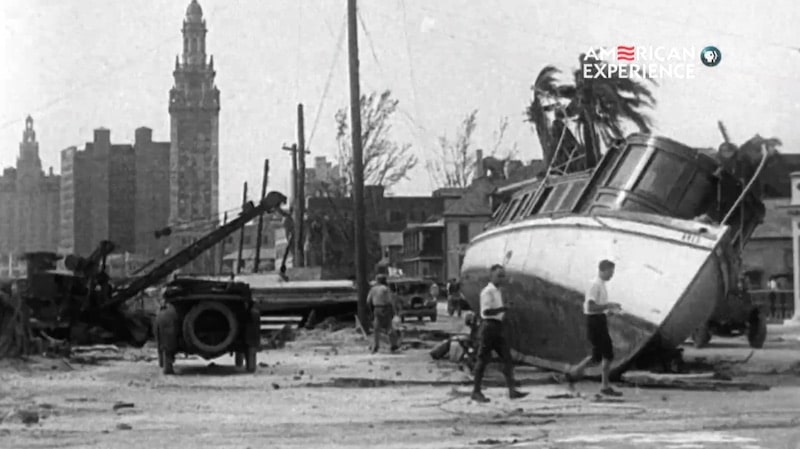
The hurricane of 1926 hit Miami, Florida, with such ferocity it leveled the city — wreaking havoc and widespread death and destruction.
Rare footage of the disaster is shown in our exclusive sneak peek of The Swamp on PBS, which looks at the unintended and sometimes catastrophic consequences of humans trying to exploit Florida’s Everglades.
Based in part on the book The Swamp: The Everglades, Florida, and the Politics of Paradise by Michael Grunwald, this documentary shows just how fragile the state and the
Marjory Stoneman Douglas’s landmark book The Everglades: River of Grass, has also highlighted how the Everglades is essential to both wildlife and people.
The vast watershed used to cover the southern half of the Florida peninsula. The Swamp shows how human exploitation — in a bid to use the area for profit — has caused untold problems.

Told through various characters, the documentary explores the way people have tried to turn what they viewed as a “vast and useless wasteland” into a rich agricultural and urban paradise for residences.
While the planet racks up deadly weather events, one after another, The Swamp is a timely cautionary tale about the abuse of nature.
Quick buck artists and entrepreneurs aided by corrupt politicians saw great potential in draining the Everglades and turning the massive wetland into a money-maker — including by trying to “drain” them.
From PBS:
Philadelphia industrialist Hamilton Disston was the first to make a serious effort to drain the Everglades.
In 1881, he purchased four million acres of swampland from the state, dug canals that opened up dry land, and attracted newcomers, but a season of heavy rains flooded farms and frustrated his plans.
Governor Napoleon Bonaparte Broward, who took office in 1905, promised to finish what Disston had started. Though Broward only reclaimed 12,000 acres while governor, he convinced people that the Everglades
could be drained.As he exited office, Broward sold a huge tract of the Everglades to land speculator Richard Bolles to keep his project on track.
Promising that the whole of the Everglades would be drained in a year, Bolles sold thousands of parcels sight unseen to would-be farmers and settlers from all over the country.
Many new landowners soon discovered that their investment was still underwater. “I have bought land by the acre, and I have bought land by the foot,” said one purchaser, “but, my God, I have never bought land by the gallon.”
The 1920s saw a huge residential boom in Florida, and native vegetation was removed to plant celery, lettuce, tomatoes
Miami saw a huge increase in real estate, and across “alligator alley” in Naples on the Gulf Coast side, the area became a refuge for
Naturalist Charles Torrey Simpson sounded an alarm about the dangers of killing the biodiversity for real estate deals and farming. But some well-connected women were the ones who eventually created the path to protect the Everglades wilderness.
PBS says:
Altering the landscape of the Everglades also unleashed a torrent of unintended deadly consequences, from catastrophic floods to brutal droughts.
In 1926, a devastating hurricane struck south Florida and turned Miami’s boom into a bust. Two years later, another violent hurricane pushed the waters of Lake Okeechobee over the top of its flimsy muck dike and drowned 2,500 people, mostly black migrant laborers from the Deep South and the Caribbean.
The 1928 Lake Okeechobee Hurricane would become the second deadliest natural disaster in American history.
Ernest Coe created a large national park in the 1920s and Miami Herald writer Marjory Stoneman Douglas helped spread the word. In 1934, President Franklin Delano Roosevelt signed a bill authorizing the creation of Everglades National Park.
In the decades since, developers and those in charge of the lands are said to have had a “fluid” relationship in building in places previously destroyed.
“It really is a moral test, of whether we’re going to be able to preserve a place for people alongside a unique creation of wilderness.” — journalist and author Michael Grunwald on the future of the Everglades.
American Experience executive producer Mark Samels says: “The Swamp tells an epic tale of man’s never-ending attempt to control nature. The story of the repeated efforts to tame the Everglades — and the often deadly results of those attempts — is a particularly cautionary tale in these days of increasingly violent natural disasters.”
The Swamp Premieres Tuesday, January 15,